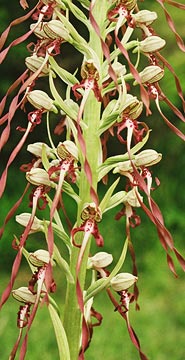500 species of plants and animals vanish because of humans, says study
 Nearly 500 species of plants and animals have disappeared in England in the past 200 years, according to the first comprehensive audit of native wildlife.
Nearly 500 species of plants and animals have disappeared in England in the past 200 years, according to the first comprehensive audit of native wildlife.The disappearances, which have been largely attributed to human activities, include four species that did not exist anywhere else. The great auk, a flightless seabird similar to a penguin, Ivell’s sea anemone, Mitten’s beardless-moss and York groundsel, a weed, have all become extinct since 1800.
“These species were lost on our watch. In the late 1980s the last Ivell’s anemone died out in a lagoon near Chichester,” said Dr Tom Tew, chief scientist for Natural England.
The York groundsel was discovered in 1979 by Richard Abbott, a biologist from St Andrews University, offering the first glimpse of “evolution in action” in Britain. However, the fragile existence of the species had come to an end by 2000, partly because of the use of weedkiller by York City Council.
The survey trawled records and specimens dating back 2,000 years. All but 12 of the 492 species to vanish were lost after 1800. This was attributed in part to the scarcity of records in pre-Victorian times, but also to increased hunting and fishing, loss of habitat to farming, and climate change. “Extinction rates are very high and it’s predominantly down to changes in land use,” said Professor Kathy Willis, a long-term ecologist at the University of Oxford.
Natural England, a government advisory body that carried out the study, compared the rate of disappearances now being experienced to those during severe global extinction events, such as caused disappearance of the dinosaurs.
“Extinction rates are 1,000 times higher than natural background rate indicated by the fossil record,” Dr Tew said. “This time it isn’t being driven by a meteorite hitting Earth or a natural catastrophe, but by human activities.”
Other ecologists said, however, that it was not valid to compare recent events in England with fossil evidence, which represented longer timescales and was not as geographically specific.
The report, called Lost Life: England’s Lost and Threatened Species, showed that the geographical ranges of many species were being reduced to isolated spots, meaning that children would not experience the same diversity of wildlife as their grandparents.
The white-tailed eagle and the chough were lost from the North West, the bumblebee vanished from the North East and puffins and blue stag beetles were lost from the South East.
However, the report offered encouragement, suggesting that conservation efforts, when employed, had been effective. “The red kite, which disappeared by the end of the 19th century, has now been firmly established in the hundreds,” Dr Tew said. “The corncrake, ladybird spider, sand lizard and polecat are all slowly but surely returning.”
Dr Jane Smart, director of the biodiversity group at the International Union for the Conservation of Nature, said: “We need to scale up and mainstream conservation work.”
From The Times
You can return to the main Market News page, or press the Back button on your browser.

